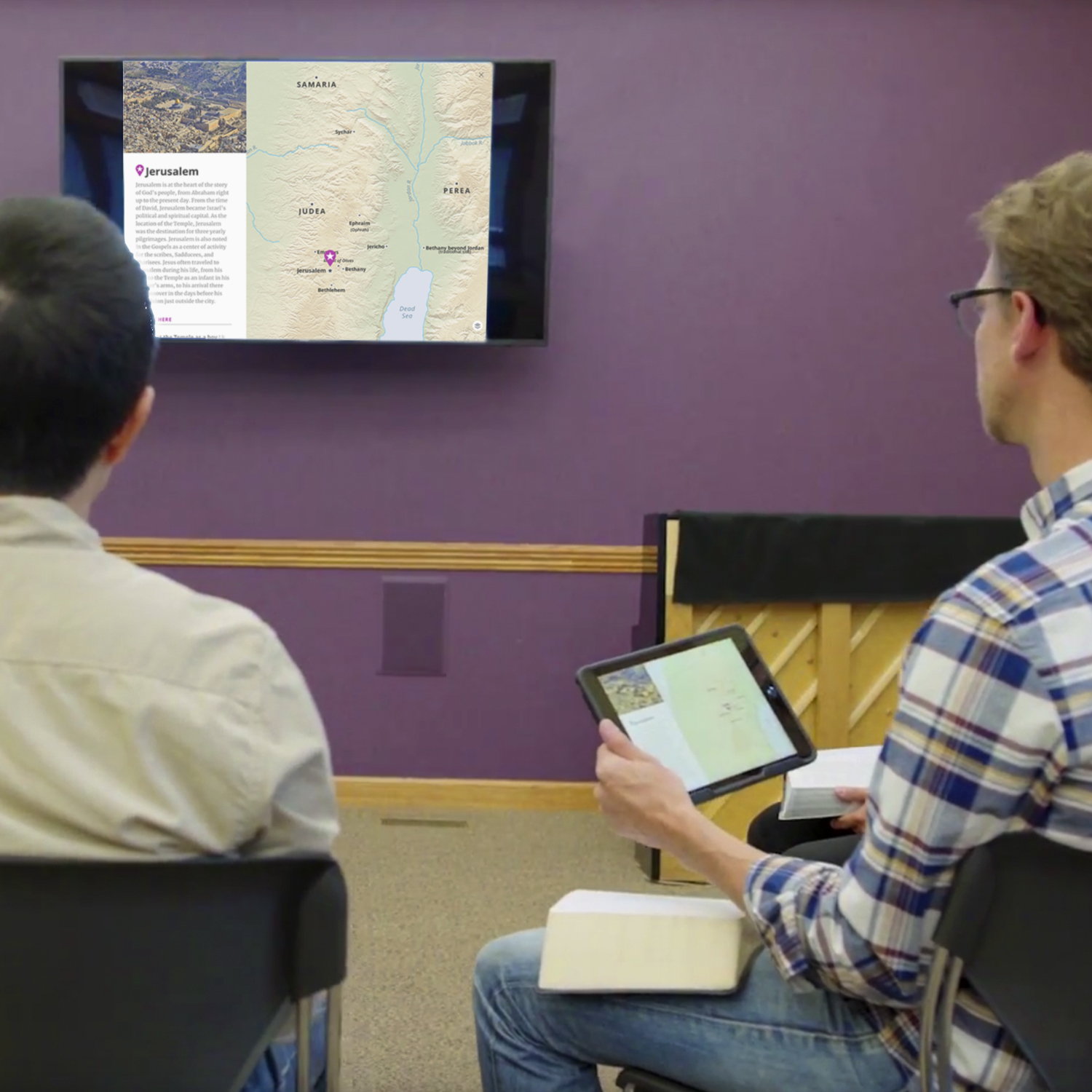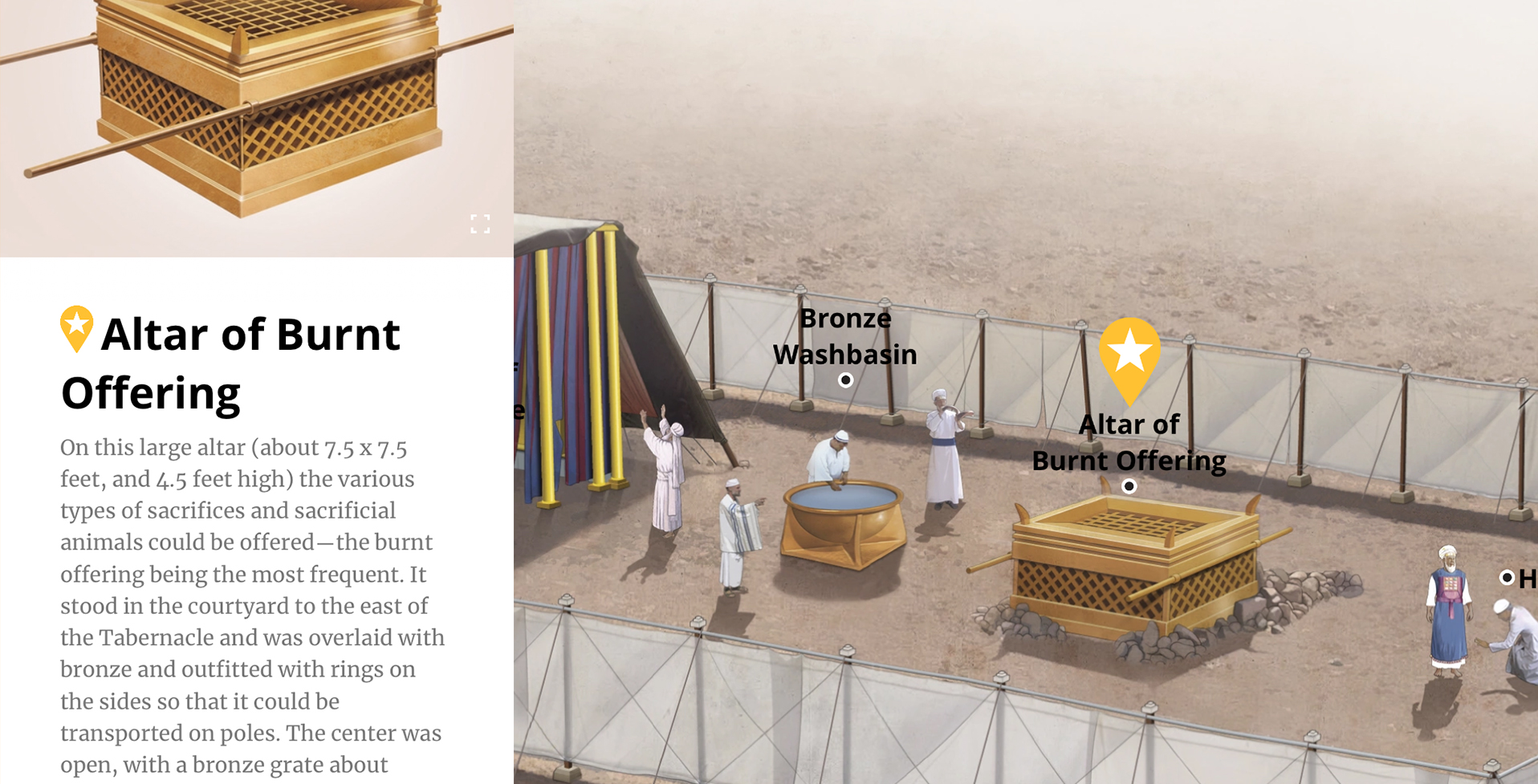
Teaching with the Filament Bible
One of my favorite ways to serve at my church is teaching the Bible. Whether it is an adult discussion group on Sunday morning, a small group, or even a kids’ Sunday School class, I just love the opportunity to lead a conversation around God’s Word. Recently, I had the pleasure of teaching a group of adults through the Old Testament, and I found the Filament Bible to be a uniquely valuable resource for me as a teacher.
I definitely used some of the study notes and articles to help me as I prepared to teach each week, but the really great thing was that I was able to use the interactive visuals and videos as part of my class. The room I was teaching in has a big TV that is often used for RightNow Media videos, so it was already equipped with an Apple TV that made sharing the screen of my iPhone super easy. (This can also work with your Android phone and a Google Chromecast or with an adapter connected to your phone so it can be hardwired directly to your TV or projector).
When I was teaching about the Tabernacle, I didn’t need to rely on people being able to picture it in their heads as I talked through the significance of its architecture and furniture. Instead, I just scanned page 145 in my Filament Bible (Exodus 35), opened up The Tabernacle interactive illustration, and mirrored the screen of my iPad to the television through the Apple TV. Then, I could zoom in, tapping on the individual pieces of furniture and showing the detailed illustrations, or zoom out and discuss how the overall architecture of the Tabernacle is designed to teach Israel—and therefore us—about God’s holiness.

When I was teaching about the book of Ecclesiastes, I simply used the Filament app to stream the Bible Project’s video that does a phenomenal job of helping people understand this complex book of ancient Hebrew poetry in just 8 minutes.
When I was teaching about the Exile, I tossed up an interactive map of the Ancient Empires and clicked on the Assyrian, Babylonian, and Persian Empires in succession so people could see the way the borders of these massive empires relate to our modern borders and how they each swallowed up Israel and/or Judah as part of God’s judgment against his rebellious people.
Each of these things—and more like them—helped the people in my class better understand their Bible. And the Filament Bible made it both easy and fun to engage with these interactive visuals in ways that allowed their questions and comments to guide the discussion. This led to fresh questions, new insights, and deeper understanding for them—and for me.
I’m not sure I’ll ever want to go back to teaching the Bible without it.
